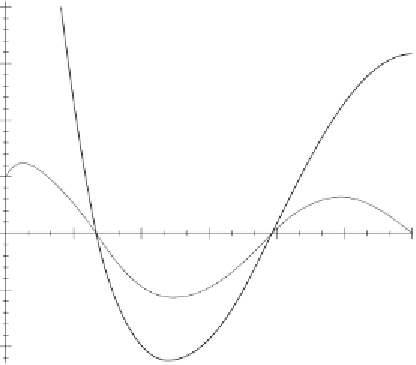Geoscience Reference
In-Depth Information
4
3
2
1
0
30°
60°
90°
120°
150°
180°
F()
Ã
-1
S( )
Ã
-2
Fig. 2.17. Stokes' functions
S
(
ψ
)and
F
(
ψ
)
use
ellipsoidal coordinates ϕ, λ
. As a spherical approximation,
ϑ
is the com-
plement of ellipsoidal latitude:
ϑ
=90
◦
−
ϕ.
(2-315)
Hence, we have
dσ
=
2
π
λ
=0
π/
2
cos
ϕdϕdλ,
(2-316)
ϕ
=
−π/
2
σ
so that Stokes' formula now becomes
2
π
π/
2
R
4
πγ
0
∆
g
(
ϕ
,λ
)
S
(
ψ
)cos
ϕ
dϕ
dλ
,
N
(
ϕ, λ
)=
(2-317)
λ
=0
ϕ
=
−π/
2
where
ϕ, λ
are the ellipsoidal coordinates of the computation point and
ϕ
,λ
are the coordinates of the variable surface element
dσ
. The spherical distance
ψ
is expressed as a function of these coordinates by
cos
ψ
=sin
ϕ
sin
ϕ
+cos
ϕ
cos
ϕ
cos(
λ
−
λ
)
.
(2-318)
Stokes' function in terms of spherical harmonics
In Sect. 2.13, Eq. (2-273), we have found
∞
∆
g
(
ϑ, λ
)=
1
R
(
n
−
1)
T
n
(
ϑ, λ
)
.
(2-319)
n
=0



